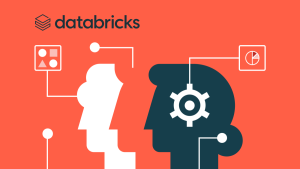AI Takes a Leap Forward: Key Updates You Must Know

The realm of generative AI continues to evolve at a breakneck speed. In just the past week, there have been several groundbreaking announcements and updates, each poised to transform the way we interact with technology. From the latest upgrades to Chat GPT and Microsoft’s new Copilot, to innovative tools by Adobe and 11 Labs, the advancements are nothing short of remarkable.
However, while many announcements hint at what’s to come, a significant number of these innovations are ready to use today. This article highlights those you can immediately integrate into your workflow, making the promise of AI more tangible. Let’s dive into the specifics of these exciting developments.
Chat GPT’s New Data Analysis Tool
OpenAI has upgraded Chat GPT with a new data analysis tool, known for its ability to perform reliable calculations. This feature allows users to create interactive tables through a revamped code interpreter, enhancing customization and reliability. Fans of Chat GPT will find this development particularly exciting.
Moreover, a site on Hugging Face has gained massive popularity for offering free GPT-4.0 services. Users can upload images and use voice inputs, although it’s currently overloaded due to high demand. This free service showcases the potential of integrating various modalities in AI, offering something more interactive and accessible to the public.
Microsoft’s Copilot and Copilot Studio
Microsoft announced several AI features, focusing on their Copilot and Copilot Studio. Although not all features are available immediately, this platform aims to enhance productivity through automation. Copilot Studio allows companies to build customized GPTs, facilitating tasks like team meetings and project management.
Some corporations block access to Chat GPT, making Microsoft’s Copilot a necessary alternative. The new interface includes actions that don’t need user-hosted API endpoints, making it consumer-friendly with easy-to-use toggles. Microsoft’s approach aims to shift from general AI models to specialized co-pilots, similar to what Google calls ‘gems’.
No-Code Automations: The Future of AI
The introduction of no-code automations in Copilot Studio allows users to create workflows without coding expertise.
These workflows can trigger multiple actions, simplifying processes and enhancing efficiency. Just to access Copilot Studio, companies pay $30 per user per month, which is separate from any other OpenAI subscriptions.
The move towards no-code automations signals a future where more personalized agents could assist users independently. This technology simplifies tasks, allowing users to set triggers and actions that run in the background.
The Emergence of Smaller, Multimodal AI Models
Smaller yet powerful AI models have been introduced, including a vision model with 4.2 billion parameters. Despite its small size, it features impressive capabilities like a large context window and native multimodal functions.
These models are expected to be integrated into hardware like phones, advancing AI accessibility. The smaller size doesn’t compromise on performance, making them suitable for extensive use cases.
The development of such models signifies a leap in AI technology, enabling users to build and deploy advanced applications even on portable devices.
Interactive AI Experiences: Chatter App
A new interactive podcast app called Chatter allows users to participate in conversations with an AI. The app is designed to pick up on speech patterns and emotional cues for a more natural interaction. This makes for a fun and engaging experience.
The underlying technology focuses on emotional awareness, setting it apart from other AI applications. The app’s low latency ensures a smooth interaction, making it an excellent choice for showing off to friends and family.
Chatter offers a glimpse into the possibilities of conversational AI, demonstrating how AI can be both entertaining and functional.
Adobe’s New Generative Tool in Lightroom
Adobe has added a new feature in Lightroom that allows users to remove parts of an image without needing Photoshop. This generative tool makes bulk photo editing more efficient and user-friendly.
Previously, removing elements from images required a round trip to Photoshop, complicating the editing process. Now, it can be done directly within Lightroom, saving time and effort for photographers.
This update is particularly useful for those working with large volumes of photos. The inclusion of such a tool in Lightroom signifies Adobe’s commitment to improving user experience with advanced editing features.
11 Labs’ Audio Player for Websites
11 Labs has launched an audio player that can read out entire websites in natural-sounding voices. Unlike previous, robotic-sounding players, this new feature offers a more pleasant listening experience.
This tool is easy to implement with a simple embed code, making it accessible for any website builder. It could revolutionize the way users consume written content online.
The world of AI is moving rapidly, with an array of new tools and features that are changing how we interact with technology. From OpenAI’s Chat GPT upgrades and Microsoft’s Copilot to Adobe’s new generative tool, the advancements are remarkable.
These innovations not only offer enhanced functionality but also make AI more accessible and user-friendly. As we continue to explore these tools, the potential for more personalized and efficient workflows becomes increasingly evident.
With new applications like Chatter and 11 Labs’ audio player, AI is becoming both practical and entertaining, giving a glimpse into an exciting future.





